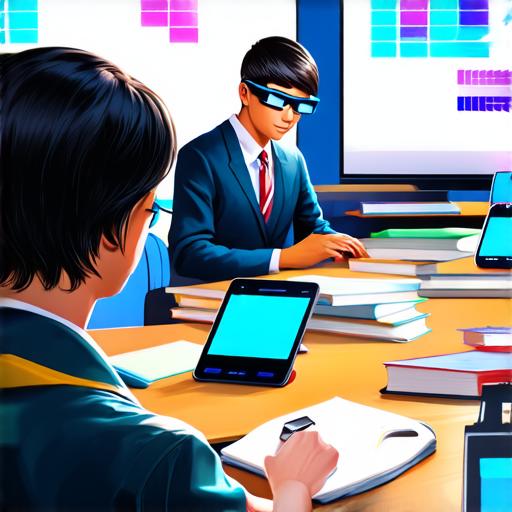Why Use Augmented Reality in Education?
AR is a powerful tool that can enhance the learning experience for students. It allows them to interact with virtual objects and environments in real-time, providing a more engaging and immersive experience than traditional teaching methods.
Some of the benefits of using AR in education include:
- Improved retention and engagement: Students are more likely to remember information when they have an interactive and engaging experience. AR can help make learning more fun and exciting, leading to increased engagement and better retention.
- Enhanced visualization and understanding: AR allows students to visualize complex concepts in a way that is difficult or impossible with traditional teaching methods. This can lead to a better understanding of the material and improved problem-solving skills.
- Increased collaboration and social learning: AR can be used to create collaborative environments where students can work together on projects and learn from each other. This can help foster social learning and teamwork skills.
Real-Life Examples of AR in Education
There are many examples of how AR is being used in education. One such example is the use of AR in science and engineering. AR can be used to visualize complex concepts such as anatomy, physics, and engineering principles. For instance, AR can help students visualize the inner workings of a car or airplane, allowing them to understand how it works and how different parts interact with each other.
Another example is the use of AR in history and social studies. AR can be used to bring historical events and locations to life, allowing students to explore and learn about them in a more immersive way. For instance, AR can be used to create virtual tours of ancient ruins or historic landmarks, giving students a better understanding of the culture and history of different parts of the world.
How to Implement AR in Educational Settings
Now that we have discussed the benefits of using AR in education, let’s look at how to implement it effectively. Here are some tips:
- Identify the learning objectives: Before implementing AR in your classroom, identify the learning objectives you want to achieve. This will help you determine which AR tools and techniques are most appropriate for your students.
- Choose the right AR platform: There are many AR platforms available, each with its own strengths and weaknesses. Choose the platform that best suits your needs and learning objectives.
- Create engaging content: AR content should be engaging and interactive to keep students motivated and interested. Consider using gamification techniques, such as quizzes or challenges, to make learning more fun.
- Provide training and support: AR can be a complex technology, and not all students or teachers may be familiar with it. Provide training and support to help everyone understand how to use the technology effectively.
- Collaborate with experts: Consider collaborating with experts in AR development or education to ensure that you are using the technology effectively and to get feedback on your implementation.

FAQs
What AR platforms are best for education? There are many AR platforms available, including Aurasma, Vuforia, and Wikitude. The best platform for you will depend on your specific needs and learning objectives.
How do I create engaging AR content? To create engaging AR content, consider using gamification techniques, such as quizzes or challenges, and make sure that the content is relevant to your learning objectives.
What kind of training should I provide? Provide training on how to use the AR platform, how to create content, and how to troubleshoot common issues.
